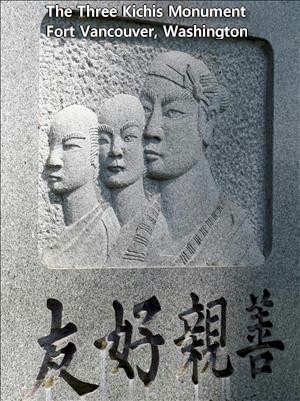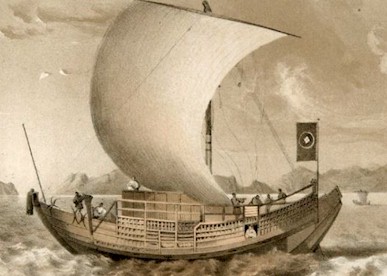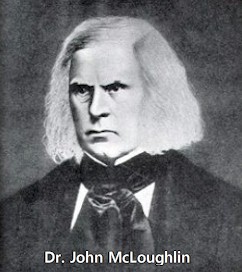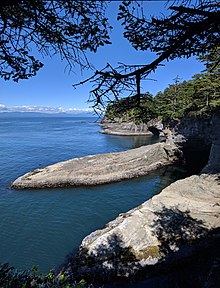The First Japanese to Set Foot on U. S. Soil
July 14, 2018
(edited 8-2-18; major editing 8-8, 8-9, and 8-12)
|
Although they were not Ryukyuan these three men were the first of many Japanese (and Okinawans who would later follow) to set foot upon the soil of the United States of America. Contrary to what one might think, the three men in this account did not travel to Hawaii to work the pineapple fields. Their story is much more unplanned and daunting.
Yamamoto Otokichi (age 15), Kyukichi (age 16), and Iwakichi (age 29).

In 1832 (first source cites the year was 1835, the 6th year of Tempo) an ill-fated crew was aboard the 15-meter (50-foot), 150-ton ship Hojun Maru. The ship had left its home port on the southeast coast of Japan in October 1832 with a crew of 14 and a cargo of rice and porcelain (or pottery) on what was supposed to be a routine journey of a few hundred miles to Edo (Tokyo). The youngest crew member was Otokichi. For a young boy growing up in a place like Onoura during the late Edo period, career choices were limited – fishing, rice-farming, and sailing were the main jobs available. Since such occupations were largely determined along family lines, Otokichi most likely knew from a young age that he was headed for the sea as a crew member on a sengokubune (a large junk-type ship with a sail). When the ship sailed out of Onoura into Ise Bay the crew was prepared for just another delivery to the capital. Instead, as they sailed out of the bay into the Enshu Sea it was hit by a typhoon and swept out to sea with a broken mast and rudder. Once out of sight of land the crew had no way of knowing where they were and gradually the great North Pacific Black Current began steadily drawing the rudderless craft out into the wider ocean – further and further from home.

|
 News of this affair eventually reached the Hudson's Bay Company in Fort Vancouver (near present-day Portland, Oregon) and came to the attention of Dr. John McLoughlin. On hearing the news Dr. McLoughlin assigned thirty men to Thomas McKay for the purpose of effecting the three Japanese men's rescue. That mission failed.
 . .
McLoughlin then sent William McNeill, captain of the company ship, along with furs and other gifts for the Indians. That worked out as hoped for and the three men were rescued. “June [1834] Monday 9th… About 3 pm we heard a couple of Cannon shot, soon after I started in a canoe with six men, and went on board the Llama with the pleasure of taking Tea with McNeill who pointed out two Chinese he picked up from the Natives near Cape Flattery where a vessel of that Nation had been wrecked not long since. There is still one, amongst Indians inland, but a promise was made of getting the poor fellow on the Coast by the time the Llama gets there.” McNeill remained at Fort Nisqually for three days and then sailed for Fort Langley. On his return to Fort Vancouver he picked up the third sailor and brought all three down to Fort Vancouver. Then came the task of figuring out how to get them back to their home country. McLoughlin loaded them up on a Hudson's Bay Company ship and took them along on a trip to Hawaii. From there they voyaged to England. On November 15th, 1834 McLoughlin gave instructions to Captain Darby of the brig Eagle, sailing for London: "The three Japanese you will take to England and I request you will have the goodness to see that they are as comfortable and as well taken care of as their situation will admit. They are supplied with clothing &c sufficient to take them to England but if they should be in want of any little necessary article you will please supply it on the Hudson's Bay Company's account." The stopover in England in June 1835 made Otokichi and his friends the first Japanese to disembark in Great Britain. Then on to Macau where they met the famed missionary Karl Friedrich August Gützlaff. They must have remained for quite some time in Macau since the missionary was able to learn the Japanese language from them. From Macau they eventually continued on to Edo but the Tokugawa government refused to take them back. They were what are referred to as "Castaways" - divorced from their home country because they had left in the first place. It didn't matter that they had been victims of storm and other things beyond their control. You see, Japan at that time was in the throes of their closed-door policy which had been in effect for 220 years beginning with the third Tokugawa Shogun, Iemitsu. No Japanese was allowed to go abroad and, if one managed to go anyway, they could not return. The policy was all about fear of Christianity permeating the Japanese culture.
|
Sources:
National Library Board, Singapore (http://eresources.nlb.gov.sg/infopedia/articles/SIP_1340_2008-03-05.html)
http://furtradefamilyhistory.blogspot.com/2013/04/japanese-junk-shipwrecked-amongst-makah.html
http://nancymargueriteanderson.com/hojunmaru/
http://www.historylink.org/File/9065
http://www.historylink.org/File/9066
Hokubei Okinawajin Shi (History of the Okinawans in North America), 1988 English translation, Resource Development and Publications, Asian American Studies Center, UCLA
and The Okinawa Club of America (the book is in my Library)


